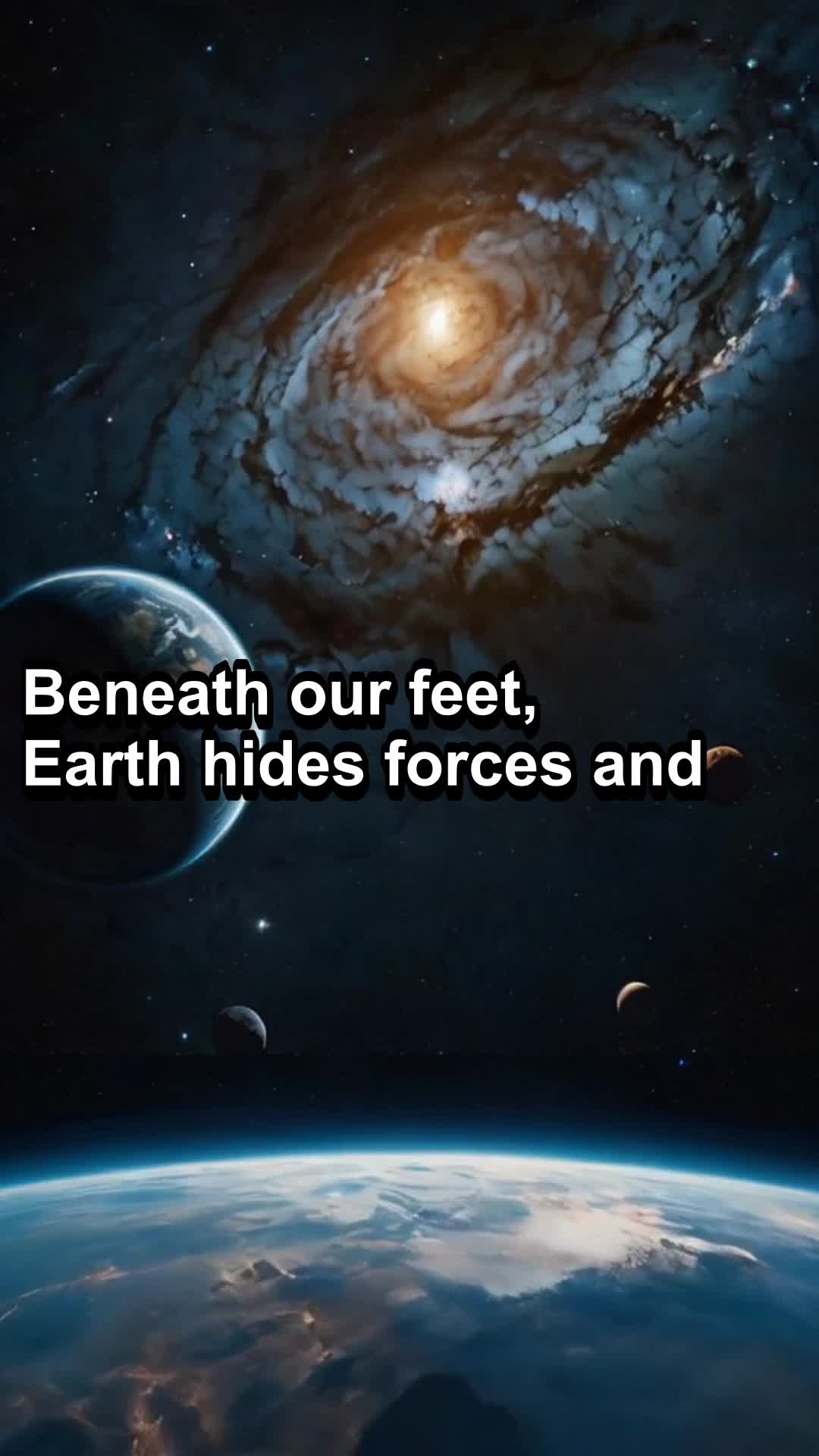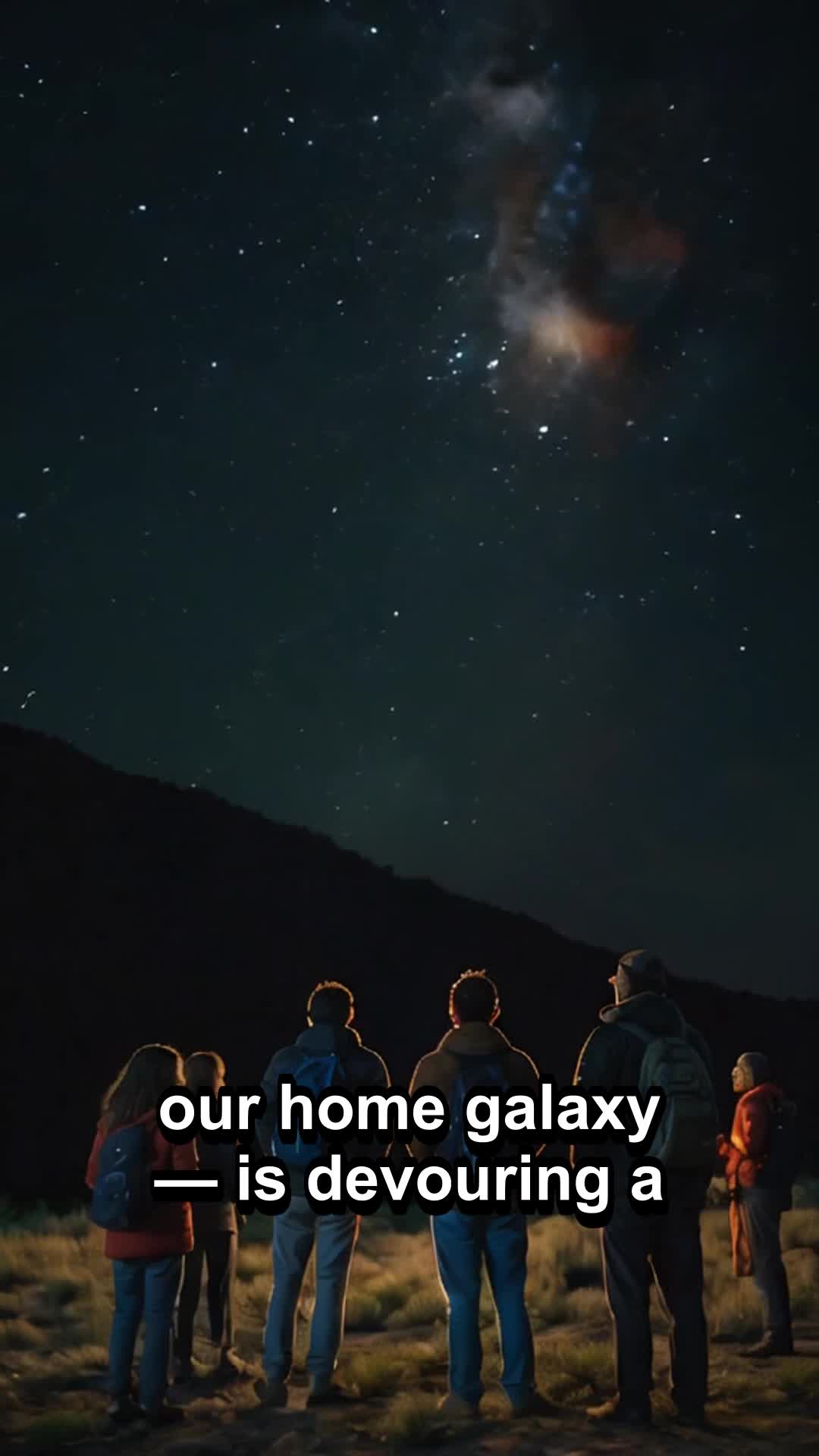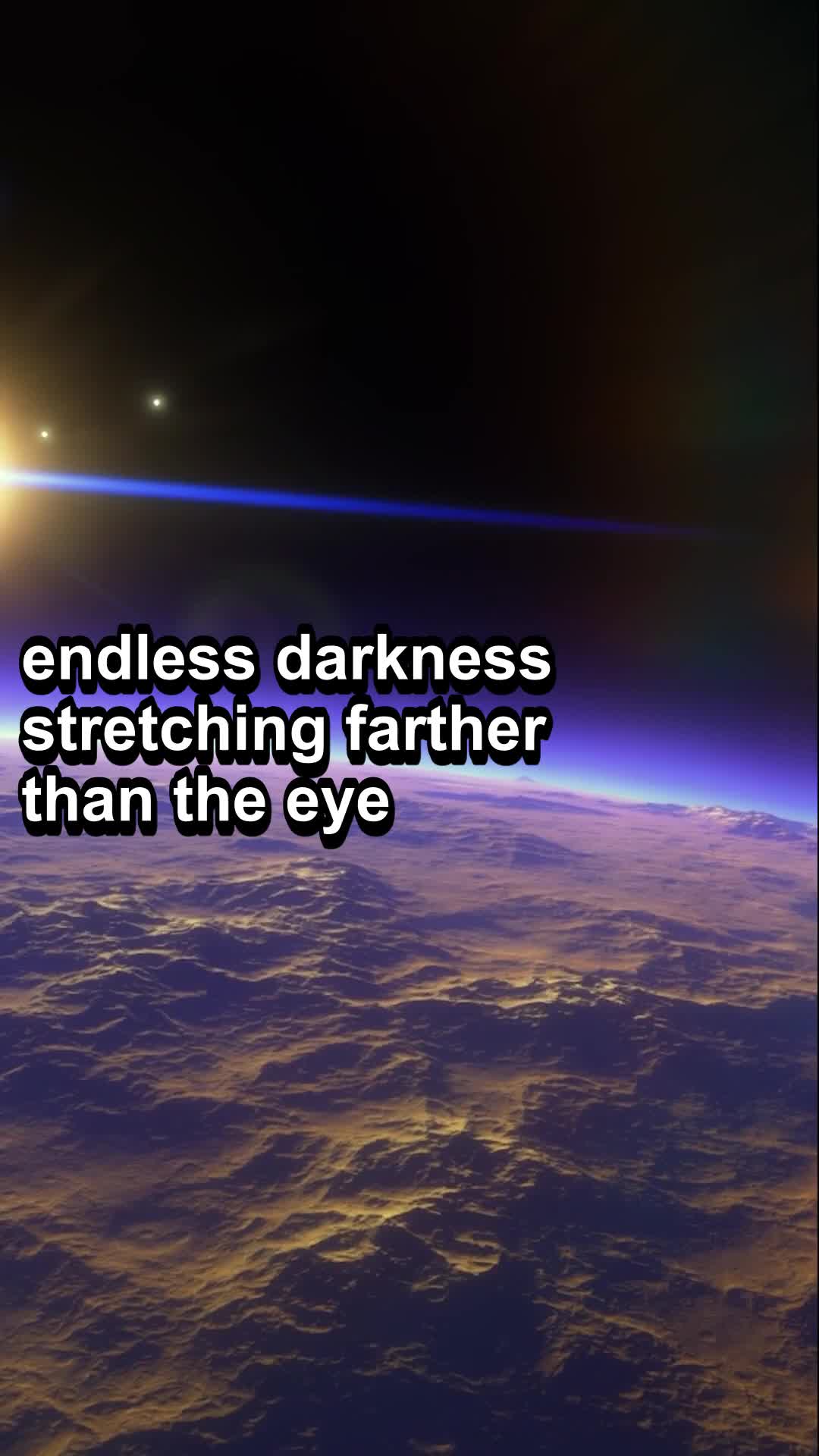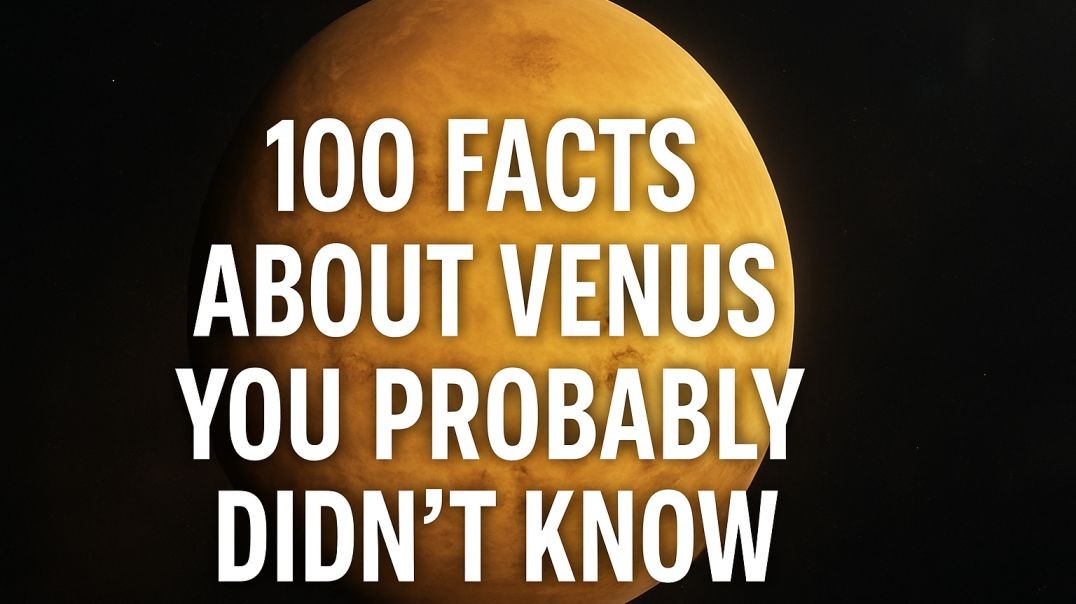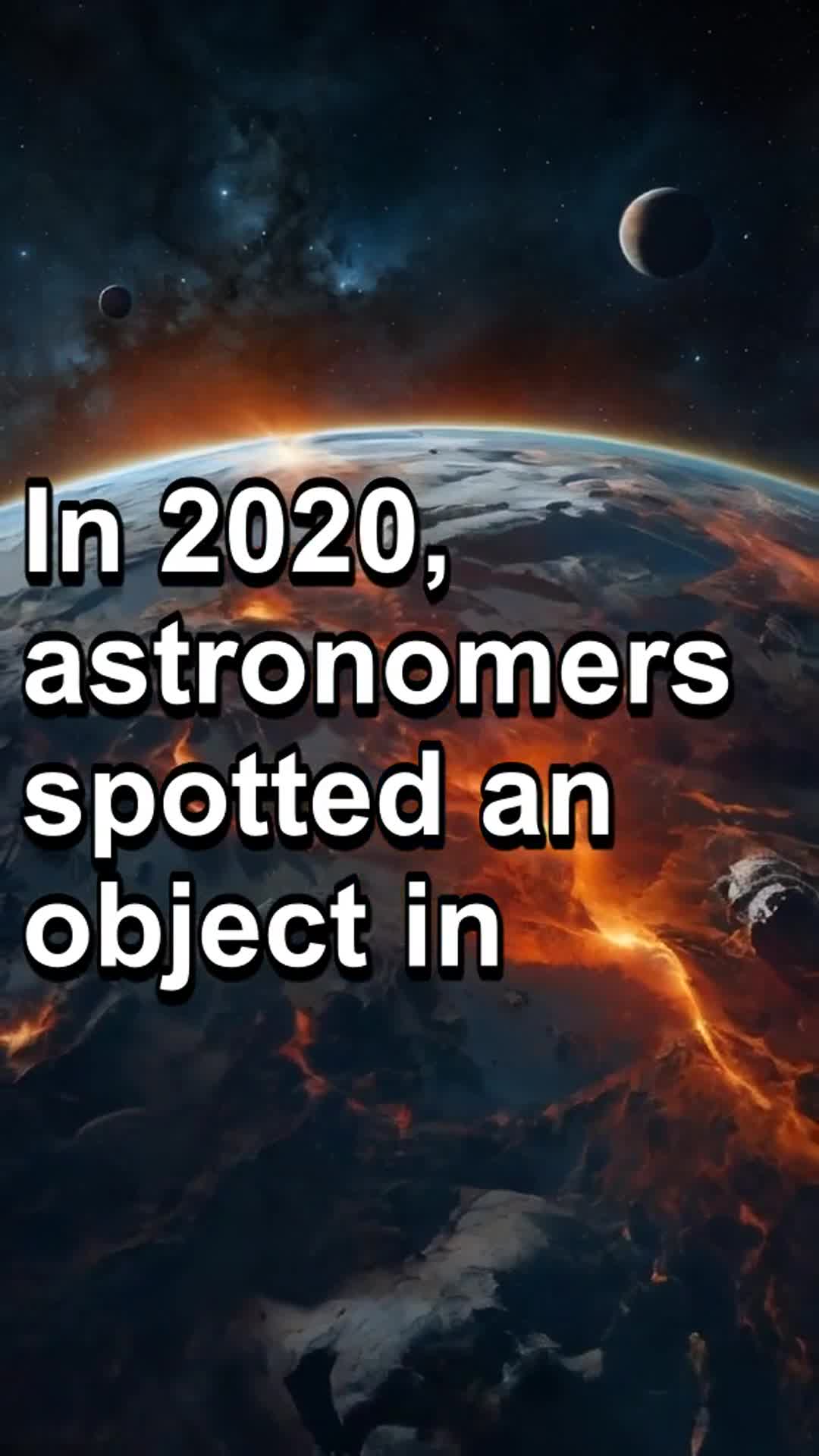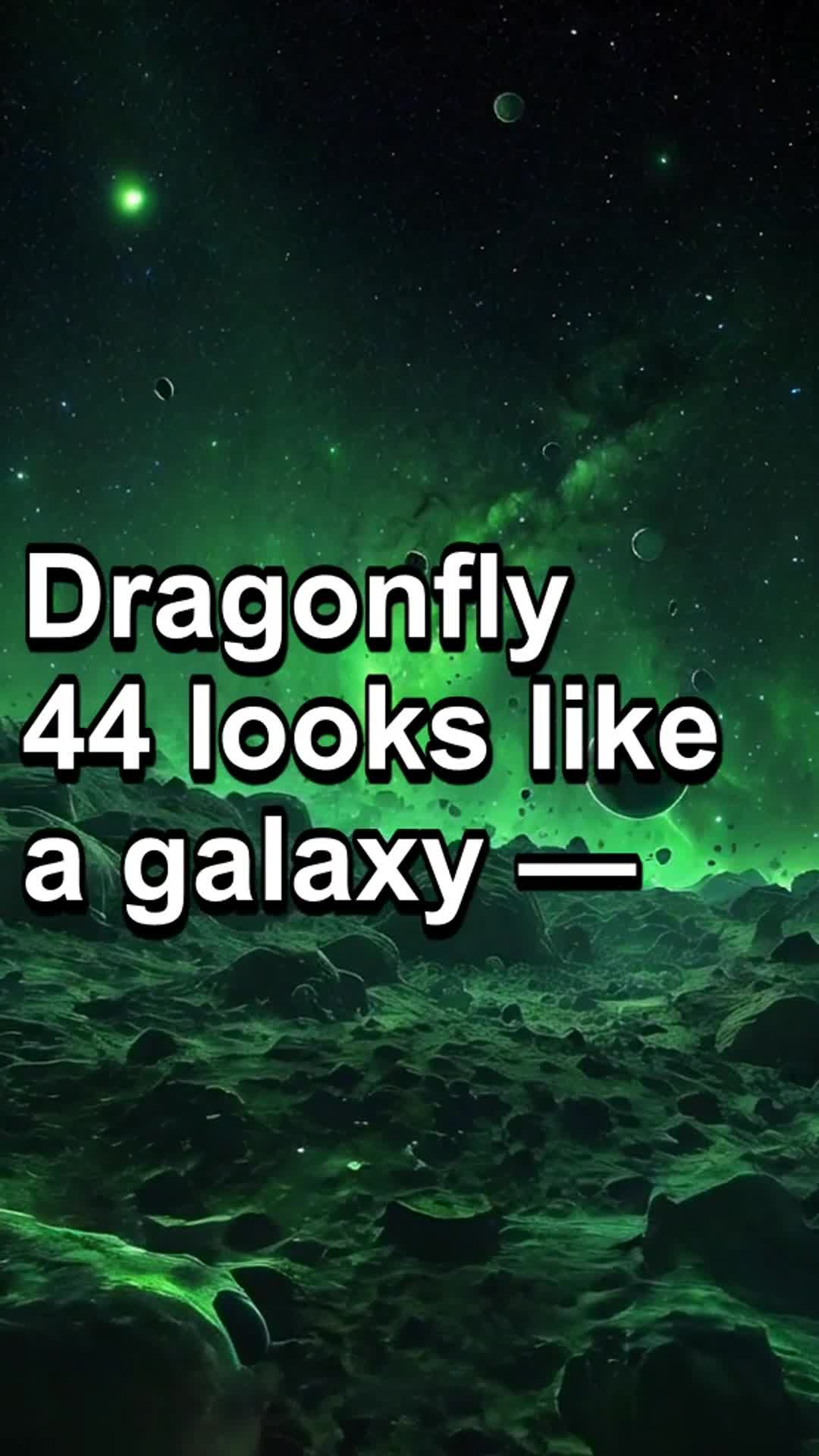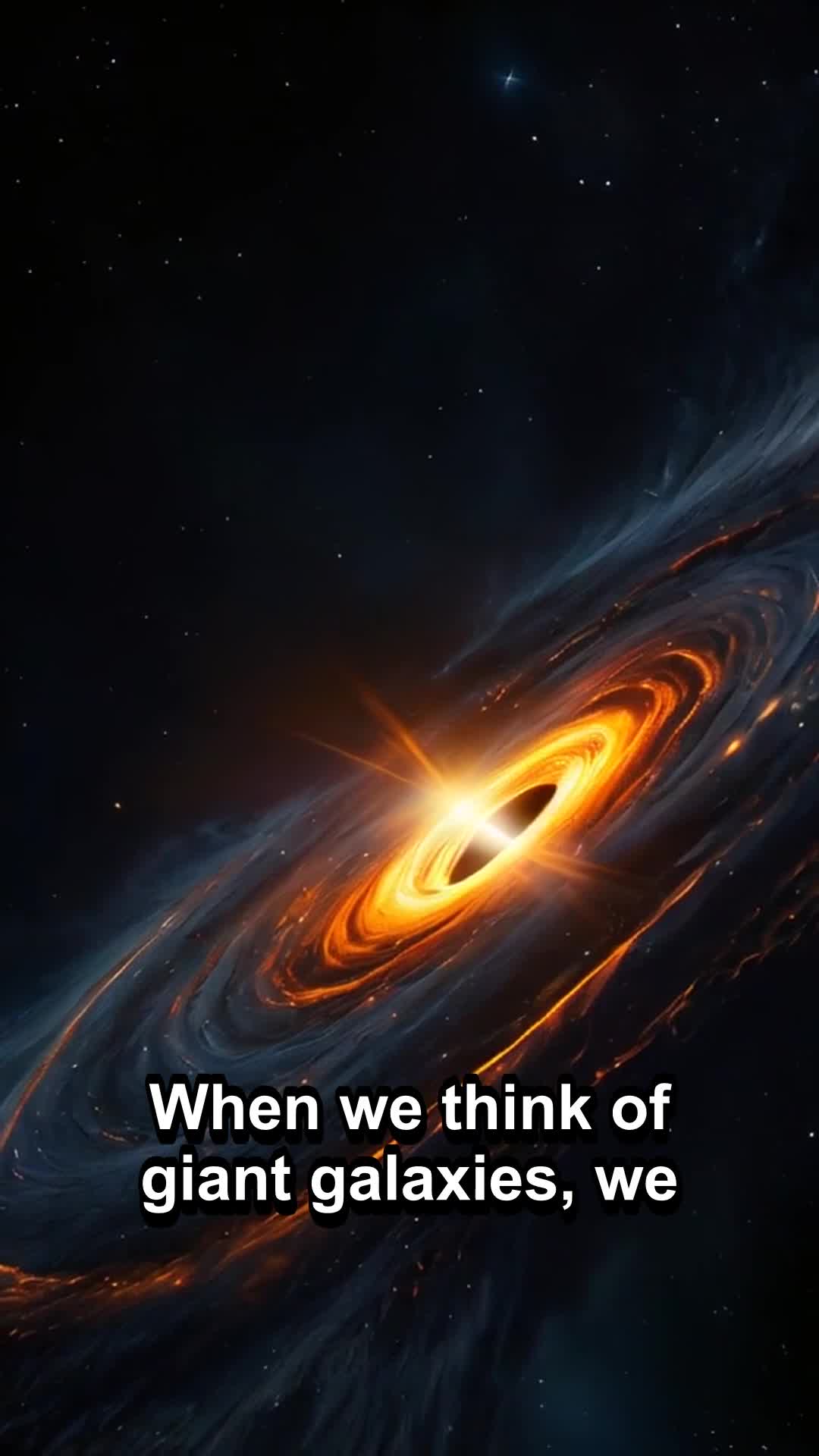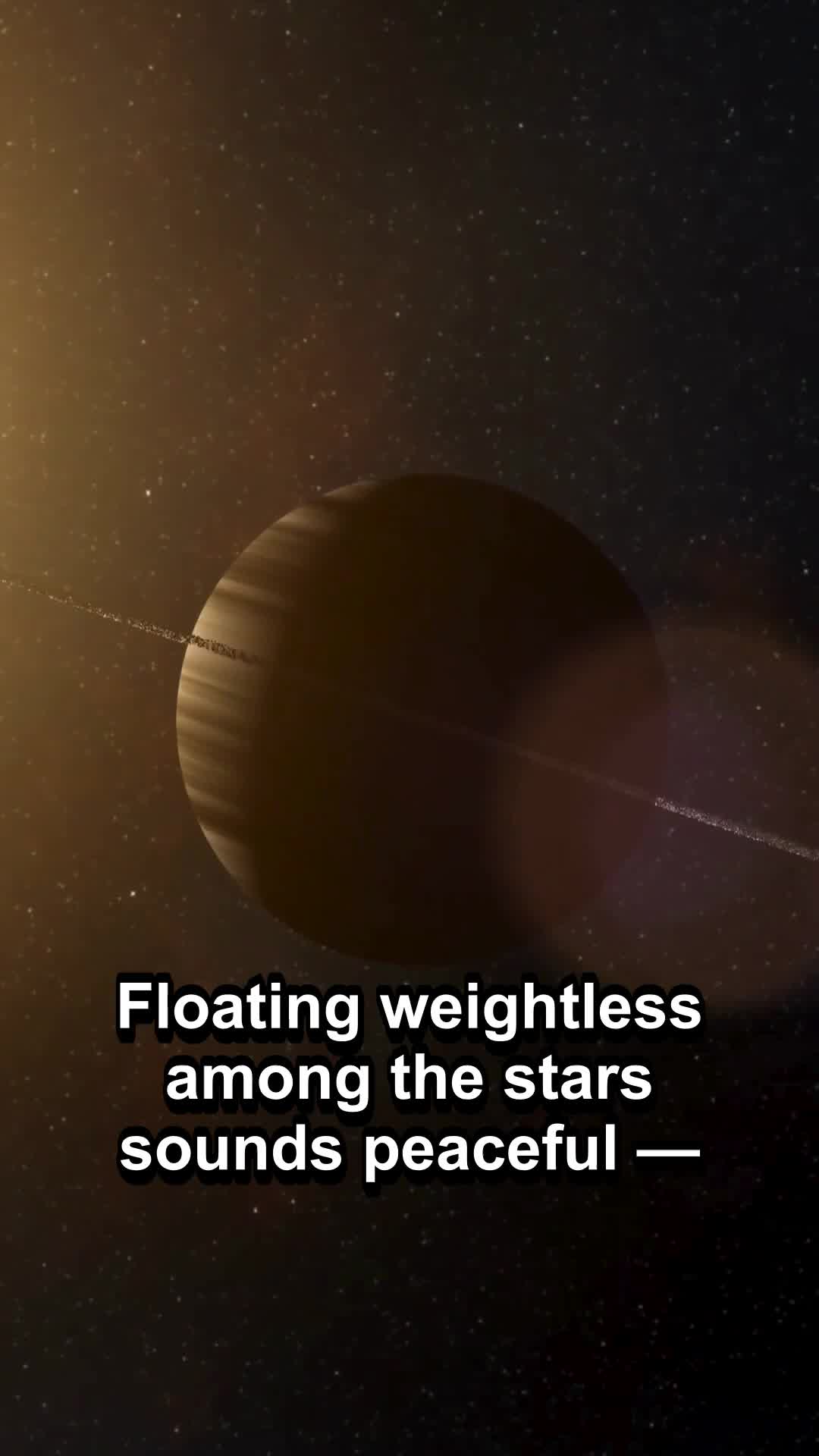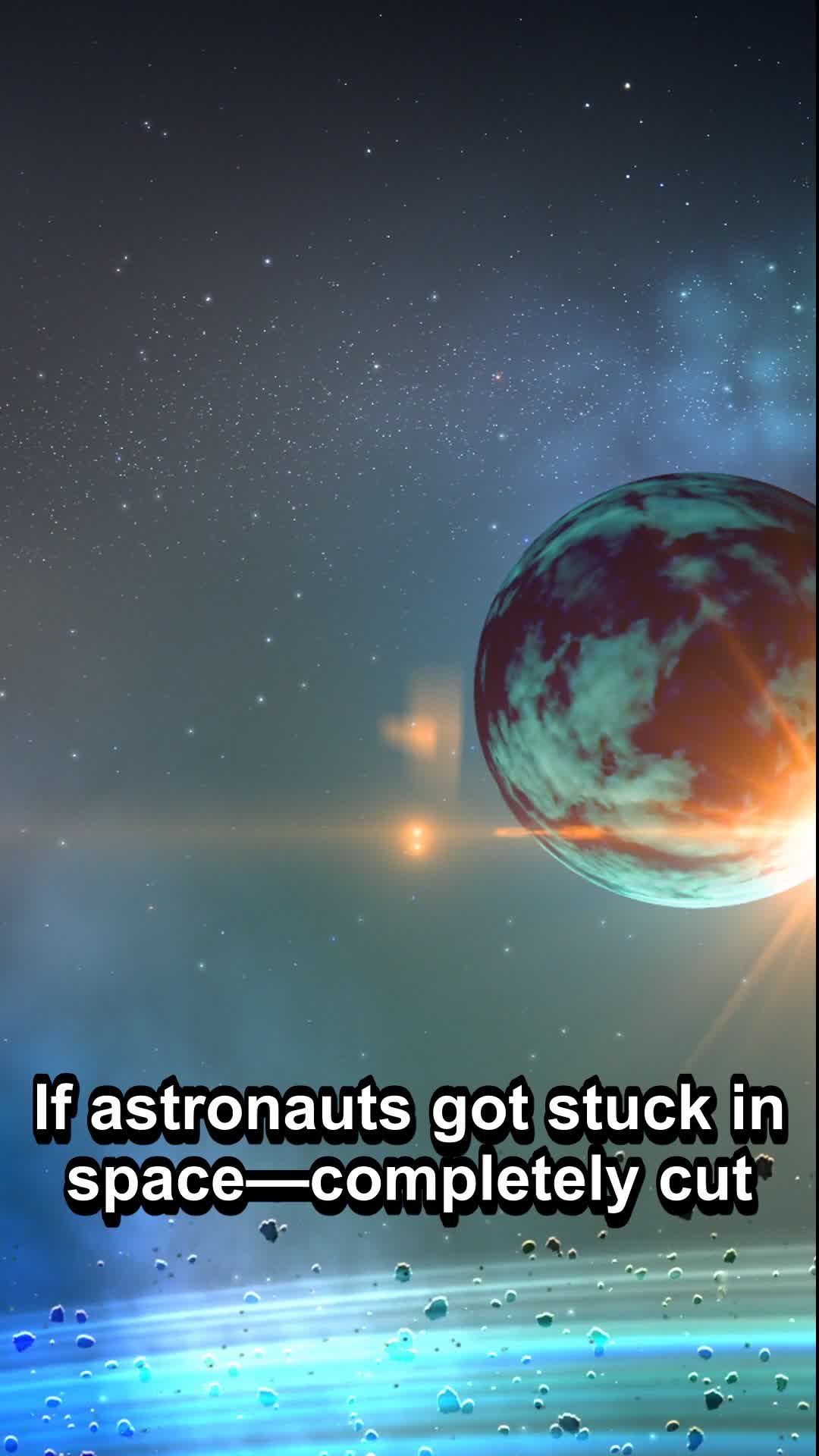Top videos
Follow me on my space youtube chanel : https://www.youtube.com/channe....l/UCnDJqQ6YxwnzhjIhn
Rain on Venus: But It Never Reaches the Ground! Venus is often called Earth's twin, but beneath its golden clouds lies a deadly mystery — it rains acid, but not a single drop ever touches the ground. High above, thick clouds of sulfuric acid form as if preparing for a massive storm. But as the acid droplets begin their deadly descent, something shocking happens: the surface heat of Venus, hotter than an oven at 475 degrees Celsius, causes the rain to evaporate before it ever hits the ground. It’s a ghost storm, an endless rain that dies mid-fall.
This educational video delves into the complex phenomenon of heat radiative decay in space, a critical aspect of astrophysics and space engineering. The video begins with an introduction to the basic principles of heat radiation and how these principles differ in the vacuum of space compared to terrestrial environments. It explains the concept of radiative heat transfer and its significance in the context of space vehicles and extraterrestrial environments. Throughout the presentation, the narrator uses detailed animations and diagrams to illustrate how heat radiation behaves in the absence of an atmospheric medium. One key focus is on the decay process of heat energy from various materials used in spacecraft construction, which can significantly influence the design and functionality of space missions. Further, the video explores the role of radioactive decay as a source of heat in space. This section clarifies how natural radioactive decay processes provide vital heat energy that can be harnessed for powering spacecraft systems during long-duration missions. The narrator explains the engineering challenges and solutions associated with integrating radioactive materials into spacecraft designs, highlighting recent advancements in technology and materials science. In addition to the technical explanations, the video also discusses the implications of heat radiative decay for future space exploration. It considers how understanding and managing these processes is crucial for the development of sustainable life support systems and habitats on other planets. The presentation concludes with a look at ongoing research and potential future breakthroughs in the field. By the end of the video, viewers will have a comprehensive understanding of heat radiative decay in space, its challenges, and its importance in advancing our capabilities for space exploration and habitation. This video is an invaluable resource for students, researchers, and anyone interested in the engineering and scientific principles that enable us to venture beyond our planet.
This is a video about This Galaxy Is Eating Another One Right Now
Dive into the depths of the cosmos with our captivating video, "Exploring the Infinite: Mysteries of the Universe Unveiled." This expertly crafted presentation takes you on a thrilling journey beyond the confines of Earth, exploring the vast, uncharted expanses of our universe. From the swirling galaxies to the enigmatic black holes, every frame of this video is designed to enlighten and intrigue the curious mind. The video begins with a breathtaking view of the Milky Way, setting the stage for a voyage through the cosmic wonders. As we venture further, the narration delves into the latest discoveries in astrophysics, accompanied by stunning visualizations of distant planets and stars. Key topics include the lifecycle of stars, the peculiar phenomena of dark matter and dark energy, and the ongoing search for extraterrestrial life. Midway through, the focus shifts to human endeavors in space exploration. Highlighting groundbreaking missions like the James Webb Space Telescope and the Mars Rover Perseverance, the video illustrates humanity's persistent quest to unravel the universe's oldest secrets. Each segment is packed with insightful interviews from leading astronomers and space scientists, who share their latest research and hypotheses about the cosmos. In addition to exploring current scientific knowledge, the video speculates on the future of space travel and the potential for human colonization of other planets. Ethical and logistical challenges are discussed, providing a well-rounded view of what lies ahead. "Exploring the Infinite" is not just a visual treat; it's an educational journey that encourages viewers to ponder the vastness and the potential of the universe. Whether you're a seasoned astronomer or a casual stargazer, this video promises to ignite your passion for the cosmos and expand your understanding of the world beyond our world.
The Most Violent Event in Space
In the gripping documentary "Unveiling the Mystery: The Quest for the Missing Dark Matter," viewers are taken on a fascinating journey through one of the most perplexing challenges in modern astrophysics: the search for dark matter. Despite being invisible and undetectable by traditional means, dark matter is believed to constitute about 27% of the universe's mass-energy composition. This video delves deep into the scientific struggle to detect and understand this elusive substance. The documentary opens with a clear and engaging explanation of what dark matter is and why it is so crucial to our understanding of the universe. It outlines the history of dark matter research, from the early indications in the 1930s, when astronomer Fritz Zwicky first inferred its existence from the gravitational effects on visible matter in galaxy clusters, to the latest experiments designed to detect dark matter particles directly. Expert interviews are a key highlight of this video, featuring renowned astrophysicists and cosmologists who share insights into the innovative techniques and technologies being employed in dark matter research. These include the use of particle detectors deep underground or in space, and the attempts to capture dark matter particles through indirect evidence such as their annihilation signals. The narrative also explores the significant implications of discovering dark matter. It discusses how a better understanding could revolutionize our knowledge of the cosmos and provide new insights into the fundamental forces and particles that govern the universe. Additionally, the documentary addresses the theoretical frameworks and competing hypotheses about dark matter, including the intriguing possibilities of dark matter being more exotic than previously thought, such as axions or WIMPs (Weakly Interacting Massive Particles). "Unveiling the Mystery: The Quest for the Missing Dark Matter" is not just a documentary; it's an invitation to ponder the profound mysteries of the universe. Viewers are encouraged to consider the vast, unseen forces at play in the cosmos, bringing science closer to unraveling one of the greatest mysteries of our time.
In this intriguing documentary-style video, we delve into the enigmatic presence of an object that, by all accounts, shouldn't be orbiting Earth. This video begins with an overview of how astronomers and scientists track and catalog various celestial bodies and debris that orbit our planet. It highlights the sophisticated technology and methods used to monitor Earth’s orbital space, including radar and telescopic data collection. As the narrative unfolds, viewers are introduced to the mysterious object in question. The video provides a detailed analysis of its discovery, including initial observations, the orbit pattern, and the scientific community's reaction. Experts in space science and astrophysics offer insights into the challenges and implications of identifying such an unusual object in Earth's orbit. They discuss various theories about its origin, ranging from a forgotten piece of space debris from early missions to more speculative origins like extraterrestrial technology. The middle segment of the video explores the potential risks associated with unknown objects in Earth's orbit, focusing on collision threats to active satellites and the International Space Station (ISS). This section includes simulations and expert commentary on space debris management and mitigation strategies currently in place to protect our orbital environment. In a thought-provoking conclusion, the video discusses the broader implications of such discoveries for international space law and future space exploration missions. It emphasizes the need for global cooperation in monitoring and managing space debris to ensure the safety and sustainability of space activities. Filled with high-definition visuals, expert interviews, and compelling narrative, this video is not just an exploration of a mysterious orbital object but also a spotlight on the ongoing efforts to understand and manage our planet's orbital environment. It’s a must-watch for anyone fascinated by space, science, and the unknown factors of our universe.
In this intriguing video, we delve deeply into the astonishing phenomenon where an entire galaxy appears to have vanished from our observational reach. The video starts by setting the stage with a brief overview of the galaxy in question, identified as NGC 1052-DF2, which until recently was a well-documented galaxy relatively close to the Milky Way. Our experts begin by explaining the basic principles of galactic visibility and detection, including the tools and technologies astronomers use to observe distant celestial bodies, such as telescopes like Hubble and powerful ground-based observatories. The narrative then shifts to the core of the mystery - NGC 1052-DF2's sudden disappearance from these observation tools. We explore several theories that astrophysicists and cosmologists have proposed to explain this phenomenon. One prominent theory suggests that the galaxy has not actually vanished but has become obscured by interstellar dust or gas, which can block the light that telescopes detect. Another theory we explore is the possibility of a significant decrease in luminosity due to unknown cosmic events, making the galaxy much harder to detect with current technology. To give viewers a clearer understanding of the implications, the video includes simulations and visual aids, illustrating how such a disappearance might occur and what it means for our understanding of the universe. It also discusses the impact of dark matter and how its enigmatic nature could play a role in the apparent vanishing of galaxies. Further, the video covers the scientific and technological advancements that might help solve this mystery, emphasizing upcoming space missions and more advanced telescopes that are currently under development. We also touch upon the broader implications of this phenomenon on our understanding of galaxy formation and stability. The video concludes with insights from leading astronomers who share their thoughts on the future of space exploration and the search for missing galaxies. They reflect on the importance of continuous observation and the evolving nature of cosmic discoveries. This detailed exploration not only sheds light on a specific cosmic mystery but also enhances our appreciation for the vastness and the unknown aspects of the universe we live in.
In the captivating science documentary, "Unraveling the Mystery: Where is the Universe’s Missing Antimatter?", viewers are taken on an extraordinary voyage into one of the biggest enigmas in cosmology. This video delves into the perplexing question of why the observable universe is overwhelmingly made of matter, whereas antimatter, which should have been created in equal amounts at the Big Bang, is conspicuously absent. The video begins with a clear and engaging explanation of what antimatter is, contrasting it with the matter that makes up the world around us. Experts in theoretical physics and cosmology explain how every particle we know has an antiparticle with opposite charge but equal mass and how these two annihilate each other upon contact, releasing energy. This foundational knowledge sets the stage for the deeper questions addressed by the documentary. As the narrative progresses, the documentary outlines the theories and experiments that have shaped our understanding of matter and antimatter. It highlights significant experiments like those conducted at CERN, including the Alpha Magnetic Spectrometer, which searches for antimatter in cosmic rays, and the Large Hadron Collider, which allows scientists to observe high-energy particle collisions that produce antimatter. The core of the documentary explores possible explanations for the matter-antimatter asymmetry. It discusses concepts such as CP violation, which suggests a slight difference in the behavior of matter and antimatter that could explain the dominance of matter in the universe. The video also considers other theories, such as the role of neutrinos and the possibility of hidden sectors of physics that are yet to be discovered. Moreover, the video does not shy away from the implications of these scientific inquiries. It discusses how understanding antimatter could not only solve fundamental cosmic mysteries but also lead to groundbreaking technological advancements, possibly in energy generation or medicine. Throughout, the documentary maintains a balance between in-depth scientific discussion and accessibility to viewers who may not have a background in science. It’s enriched with stunning visual animations that illustrate complex concepts, interviews with leading experts who convey their passion and curiosity, and thought-provoking questions that encourage viewers to ponder the nature of our universe. In conclusion, "Unraveling the Mystery: Where is the Universe’s Missing Antimatter?" is more than just a scientific explanation; it is a call to wonder and explore the unknown, an invitation to think about the universe and our place within it in new ways.
In this captivating video, viewers are taken on a scientific journey to explore the rare phenomenon of a star disappearing in real time. The video begins with a brief introduction to the life cycle of stars, explaining how these celestial bodies are born, live, and eventually die. Our focus then shifts to a specific star, identified by astronomers as exhibiting unusual behavior indicative of rapid decline and possible disappearance. The heart of the video features expert interviews with astrophysicists who delve into the possible causes behind this star's rapid reduction in brightness and visibility. Theories discussed include the impact of black holes, the effects of interstellar material blocking light, and the natural end stages of a star’s life cycle. Each explanation is supported by animations and real telescope footage, providing a clear and engaging visualization of these complex concepts. Additionally, the video explores the implications of such an event. The disappearance of a star can offer invaluable insights into cosmic phenomena, including the dynamics of celestial mechanics and the evolution of galaxies. The experts also discuss how monitoring these events helps improve our understanding of the universe and contributes to the field of astrophysics. To help viewers understand the scale and significance of the event, the video includes comparisons with other historical celestial events and discusses the technological advancements in telescopes and space observation that have allowed us to witness such phenomena in unprecedented detail. The conclusion of the video emphasizes the importance of continued space exploration and observation for solving the mysteries of the universe. It invites viewers to ponder the vastness of space and the exciting, ongoing quest for knowledge that drives humanity to look to the stars.
This is a video about The Planet That s Being Torn Apart in Front of Us
You can’t see it. You can’t touch it. Yet it holds the cosmos together. This is the mystery of dark matter—an invisible substance that makes up over 85% of the universe’s mass.
But if we can’t detect it directly, how do we even know it exists? In this mind-bending video, we explore the strangest facts about dark matter that most people have never heard. You'll discover how galaxies spin too fast for visible matter alone to hold them together—hinting at a hidden force. We dive into why dark matter doesn’t emit, absorb, or reflect light, making it completely undetectable by traditional means. You’ll also learn about the bullet cluster, a cosmic collision that offers some of the strongest evidence for dark matter's existence.
Plus, we touch on the possibility that dark matter might be made of undiscovered particles or entire shadow worlds parallel to ours. Is dark matter the key to understanding gravity, time, and the fate of the universe? Or is it something even stranger? Watch now and question everything you thought you knew about the cosmos.
Dive deep into the cosmic abyss with our latest documentary, "The Dark Galaxy," where we unravel the enigmatic phenomena of dark galaxies, a mysterious class of galaxies abundant in dark matter but with very few stars. This video provides an awe-inspiring journey through space, narrated by noted astrophysicists and astronomers who guide us through the latest research and theories surrounding these invisible galaxies. The documentary begins by setting the stage with a vivid depiction of the known universe and gradually narrows down to the specific, less understood concept of dark galaxies. Using stunning visual effects and high-definition telescope imagery, the video captures the eerie beauty of these hidden cosmic entities. Viewers will learn about the role of dark matter in the formation and evolution of galaxies and why understanding dark galaxies is crucial to comprehending the broader workings of our cosmos. Experts in the field discuss the challenges astronomers face in detecting these galaxies, given their lack of light-emitting stars, and the innovative techniques used to explore them. This includes the use of radio telescopes and indirect observation methods through gravitational lensing. The documentary highlights several key discoveries, such as the accidental finding of Dragonfly 44, a galaxy composed of 99.99% dark matter, and discusses what these findings imply about the universe's mass and its fate. "The Dark Galaxy" not only educates but also sparks curiosity and wonder about the unseen parts of our universe. It addresses fundamental questions about existence and our place within this vast, largely invisible universe. The documentary concludes with a discussion on future missions and technologies that may provide more insights into dark galaxies, potentially revolutionizing our understanding of the universe. Whether you are a seasoned astronomer or a curious novice with an interest in the mysteries of space, "The Dark Galaxy" offers a compelling blend of education and visual spectacle that will expand your horizons and leave you marveling at the universe's hidden secrets.
In this captivating video, we journey to the far reaches of the cosmos to explore a celestial marvel that challenges our traditional understanding of scale in the universe: the largest galaxy known to science. Contrary to popular belief, the title of the largest galaxy isn't held by the well-known Andromeda or the Milky Way, but by a colossal structure that dwarfs even the giants of the local group. The video begins with a brief introduction to galaxies, the massive systems of stars, gas, and dust bound together by gravity, and how astronomers measure their size and mass. It then transitions into a detailed exploration of IC 1101, the current record-holder for the largest galaxy ever discovered. Located over a billion light-years away, IC 1101 extends about 4 million light-years across, making it one of the most massive and significant celestial bodies known. Through stunning visual animations, the video explains the unique properties of IC 1101, including its enormous halo of dark matter, which plays a crucial role in its size and formation. Viewers will learn about the historical observations and the technological advancements in telescopes that have allowed astronomers to study such distant and expansive galaxies. Moreover, the video delves into the implications of the existence of such massive galaxies on our understanding of the universe. It discusses the formation of galaxies in the context of the big bang theory and the role of dark matter and dark energy in shaping the cosmos. As we continue through visually rich illustrations and expert interviews, the video also addresses common misconceptions about the universe's structure and revisits fundamental questions about the cosmos’s evolution and future. This enlightening journey is not just about understanding the scale of IC 1101, but also about appreciating the incredible complexity and beauty of the universe we inhabit. Whether you are a seasoned astronomer or a curious newcomer to astrophysics, this video promises to expand your horizons and deepen your understanding of the cosmos.
Have you ever wondered what would happen if an astronaut removed their helmet while floating in the vastness of space? This eye-opening video delves into the shocking scientific truths and consequences behind this dangerous scenario. We start by exploring the basic environment of space—a vacuum with no air and extreme temperatures. The video features expert interviews with aerospace engineers and space scientists who explain the immediate effects on the human body in such harsh conditions. They discuss the lack of oxygen, severe exposure to cosmic radiation, and the rapid change in pressure. Using high-quality animations, we visualize the biological impacts in a step-by-step manner, from the boiling of body fluids due to low pressure, to the expansion of gases in the body, and ultimately, the loss of consciousness within seconds. The experts emphasize that such exposure would be fatal very quickly, debunking some common myths seen in sci-fi movies. Furthermore, the video covers the engineering behind spacesuits, designed to protect astronauts from these extreme dangers. We get a close look at the technology that allows astronauts to survive and work in space, including the suit's layers, life support systems, and communication devices. To give viewers a real-life perspective, the video includes a segment on historical space missions where astronauts have faced dangers and how their suits protected them. This not only highlights the importance of this technology but also pays tribute to the brave individuals who explore outer space. Finally, the video concludes with a discussion on the future of space exploration and the advancements in spacesuit technology being developed to ensure even greater safety for astronauts. Whether you're a space enthusiast, a student, or just curious about astronautics, this video provides a comprehensive overview of why it's crucial to keep that helmet on while in space.
This is a video about if take helment in space
Welcome to "Transform Your Living Space into a Sanctuary of Love and Peace," a video guide designed to help you infuse your home with tranquility and affection. In today’s fast-paced world, our living spaces often become just another backdrop for daily stresses. This video introduces you to the concept of 'Heart Space,' an approach to creating environments that nurture your emotional and mental well-being. Starting with the basics of 'Heart Space' design, we explore how color psychology can be used to set a calming palette in your home. Soft blues, gentle greens, and warm earth tones can transform the mood of a room. Next, we delve into the arrangement of furniture and decoration to promote positive energy flow, based on principles similar to Feng Shui. We also cover the importance of personal touches that reflect your inner self and passions, turning generic spaces into personal sanctuaries. Whether it’s family photos, artwork, or cherished keepsakes, these elements make a space truly yours. Further, the video provides practical tips on decluttering and organizing your home to reduce stress and anxiety. You'll learn how to create designated spaces for relaxation, such as a reading nook or a meditation corner, equipped with essential oils and soft lighting to enhance the peaceful ambiance. Additionally, we discuss the role of technology in creating a 'Heart Space,' recommending ways to either integrate tech in a non-intrusive manner or create tech-free zones to help you disconnect and unwind. Finally, the video includes interviews with interior designers and psychologists who share their insights on the psychological benefits of a lovingly curated space and offer advice on sustaining this sanctuary amidst your busy life. Join us in transforming your home into a 'Heart Space' where peace and love flourish. Your journey to a more serene and emotionally connected living environment begins here.
Black holes are already terrifying — but some aren’t just massive traps of gravity... they are spinning monsters. Scientists have found black holes that rotate so fast, their event horizons — the "point of no return" — practically vanish from sight.
Follow : https://www.youtube.com/channe....l/UCnDJqQ6YxwnzhjIhn
Imagine the vast, unending expanse of space—an environment where the beauty of the cosmos meets the dangers of the unknown. Our latest video, "Trapped in the Void: The Perilous Reality of an Astronaut Lost in Space," delves deep into the harrowing scenario of an astronaut becoming isolated and stranded in the infinite void. This gripping documentary-style video combines expert interviews, realistic CGI simulations, and authentic NASA footage to bring the viewer face-to-face with the stark realities and potential dangers of space exploration. The video begins with a dramatic reenactment of an astronaut's accidental separation from their spacecraft. Utilizing state-of-the-art visual effects, we simulate the moment of disconnection and the immediate challenges that follow. The narrative then shifts to a detailed exploration of the survival systems within a space suit, the critical technology designed to keep astronauts alive in such dire situations. Expert interviews feature seasoned astronauts who discuss their experiences and training for potential emergencies in space, including isolation. They share personal insights and psychological impacts of space travel, emphasizing the importance of mental resilience in survival scenarios. Space psychologists also weigh in, explaining coping mechanisms and the psychological support systems in place for astronauts during missions. Further, the video explores the scientific and technological solutions currently being developed to prevent such occurrences. Innovations in space tethering systems, improvements in suit propulsion technology, and advancements in satellite communication are highlighted, showcasing humanity's relentless pursuit to safeguard those who venture into this final frontier. "Trapped in the Void" not only educates about the potential perils in space but also celebrates the spirit of exploration and the continuous advancements in space technology that aim to overcome these challenges. It's a must-watch for anyone fascinated by space exploration, survival stories, or the future of human space travel.

